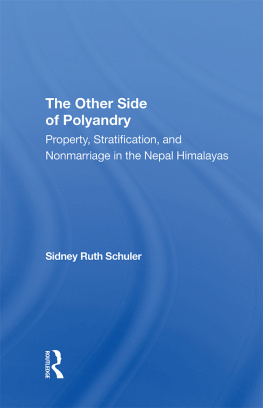LIBRARY OF CHRISTIAN PROGRESS
Volumes Issued
The Church a Community Force. By Worth M. Tippy
The Church at the Center. By Warren H. Wilson
The Making of a Country Parish. By Harlow S. Mills
Working Women of Japan. By Sidney L. Gulick
Social Evangelism. By Harry F. Ward
Cloth, 50 Cents, Prepaid
ADDITIONAL VOLUMES TO BE ISSUED
A FARMER'S HOME
A FARMER'S HOME
WORKING WOMEN
OF JAPAN
BY
SIDNEY L. GULICK
Twenty-five years a missionary in Japan, Professor in
Doshisha University, Late Lecturer in the
Imperial University of Kyoto
Author of
Growth of the Kingdom of God; Evolution of the Japanese;
The White Peril in the Far East; The American
Japanese Problem; The Fight for Peace
1915
Missionary Education Movement of the
United States and Canada
NEW YORK
COPYRIGHT, 1915, BY
MISSIONARY EDUCATION MOVEMENT OF THE
UNITED STATES AND CANADA
Dedicated
to
SHINJIRO OMOTO
in appreciation of more than a decade
of untiring service
for the
Working Women of Japan
Contents
CHAPTER PAGE
- Preface
- Social Classes in Japan, Old and New
- Farmers' Wives and Daughters
- Domestic Industries in Farming Families
- Silk Workers
- Wives and Daughters of Artizans and Merchants
- Komori (Baby-tenders)
- Household Domestics
- Hotel and Tea-house Girls
- Factory Girls and Women
- Geisha (Hetr)
- Shogi (Licensed Prostitutes)
- Ameliorative Efforts
- The Matsuyama Working Girls' Home
ILLUSTRATIONS
PAGE
- A Farmer's Home
- Separating the Wheat Heads from the Straw
- At the Loom
- A Family at Work in a Rice-Field
- Transplanting Young Rice Plants
- Spinning Cotton Thread for Weaving
- At Work in a Kitchen
- Carrying Fagots
- Baby-Tenders
- At Work in a Silk Factory
- O Hamayu (Geisha)
- Matsuyama Working Girls' Home
- Girls in the Matsuyama Home
PREFACE
Japan is rapidly swinging into the current of an industrial civilization imported from the West. How is this movement modifying her ancient civilization? And, especially, what effect is it having on her homes and on the character of her manhood and womanhood? These are questions of profound interest to students of national and social evolution.
While many works on Japan consider these questions more or less fully, they do so almost exclusively from the standpoint of the effect on men. So far as is known, no work studies the problem from the standpoint of the effect on women, who, it may be incidentally remarked, constitute one half of the population.
One book, indeed, that by Miss Alice M. Bacon, on Japanese Girls and Women, describes the homes, lives, and characteristics of Japanese women. This important work should not be overlooked by any who wish to know Japan thoroughly. Yet Miss Bacon's study is largely confined to the higher and upper middle classes, who, though important, constitute but one section of the women of Japan. To understand Japan it is also needful to know the lives and characteristics of the working classes. Especially important in the eyes of those who study social development is the transformation that is taking place in the Japanese home because of the influx of Occidental industrialism.
The purpose of this book is to give some information as to conditions prevailing among working women, which conditions have called for the establishment of institutions whose specific aim is the amelioration of the industrial and moral situation. Two classes of workers have not been consideredschool-teachers and nurses.
The reader will naturally ask what the native religions have done to help women meet the modern situation. The answer is short; practically nothing. They are seriously belated in every respect. For ages the native religions have served by doctrine and practise to hold women down rather than to elevate them. The doctrine of the "triple obedience" to father, to husband, and when old to son, has had wide-reaching and disastrous consequences. It has even been utilized for the support of the brothel system. Popular Buddhism, especially during the feudal era, has emphasized the inherent sinfulness of woman; some have even taught that her lightest sins are worse than the heaviest sins of man. The brothel system flourishes in certain districts where Buddhism is most strongly entrenched. Brothels abound in the immediate vicinity of famous and popular temples. I have yet to hear of a Buddhist anti-brothel movement or a Buddhist rescue home for prostitutes. Japanese philanthropy, under the impulse of Buddhism, did indeed start early and attain striking development at the hands of Imperial and princely personages. Men and women of lowly origin also attained high rank in the annals of Buddhist philanthropy. With the decay of Buddhism in recent centuries, however, little philanthropic activity has survived. With the revival of Buddhism Buddhists have again undertaken philanthropic work; they have established orphan asylums, schools, ex-convict homes, and various benevolent enterprises for the poor, the old, and invalids; but not yet do they seem to appreciate the moral and industrial situation, or undertake anything commensurate with their numbers and resources. The conception of private enterprise for the amelioration of industrial difficulties and moral need is still the almost exclusive possession of Christians.
The closing chapter describes one institution in which the Christian ideal is applied to the moral and industrial situation in one small town. It serves as an illustration of what is being done by Christians in other places and along many other lines as well. Christianity is being accepted in Japan, not so much because of its doctrine, as because of its practical methods of inspiring and uplifting manhood and womanhood. While the purpose of this book is, as stated, to describe the industrial condition and the characteristics of Japanese working women, back of this purpose is the desire to show how the Christian gospel, when concretely expressed, takes hold of Japanese working women in exactly these conditions and becomes to them "the power of God unto salvation."
The problems of life are substantially the same the world around, for human nature is one; and the heart with its needs, desires, temptations, defeats, and victories is essentially the same, East or West. The problems created by industrialism do not differ, whether in Germany, England, and America or in Japan and China. And their fundamental solution likewise is the same.
Let not the reader assume that the discussions of this volume give adequate acquaintance with the working women of Japan. It deals with only a few specific classes and inadequately even with them. A more comprehensive treatment would doubtless be enlightening. Limitations, however, of time and space forbid a more adequate discussion.
And let the reader be wary of generalizing certain criticisms herein made and applying them universally to all classes of women. Many years of life in Japan have led the writer to a high estimation of the character as well as the culture of Japanese women.
Especial thanks are due to Colonel Yamamuro for valued criticisms and suggestions in the preparation of this work. The responsibility, however, for its statements rests upon the writer. The limitations of this book none can feel more than he.









